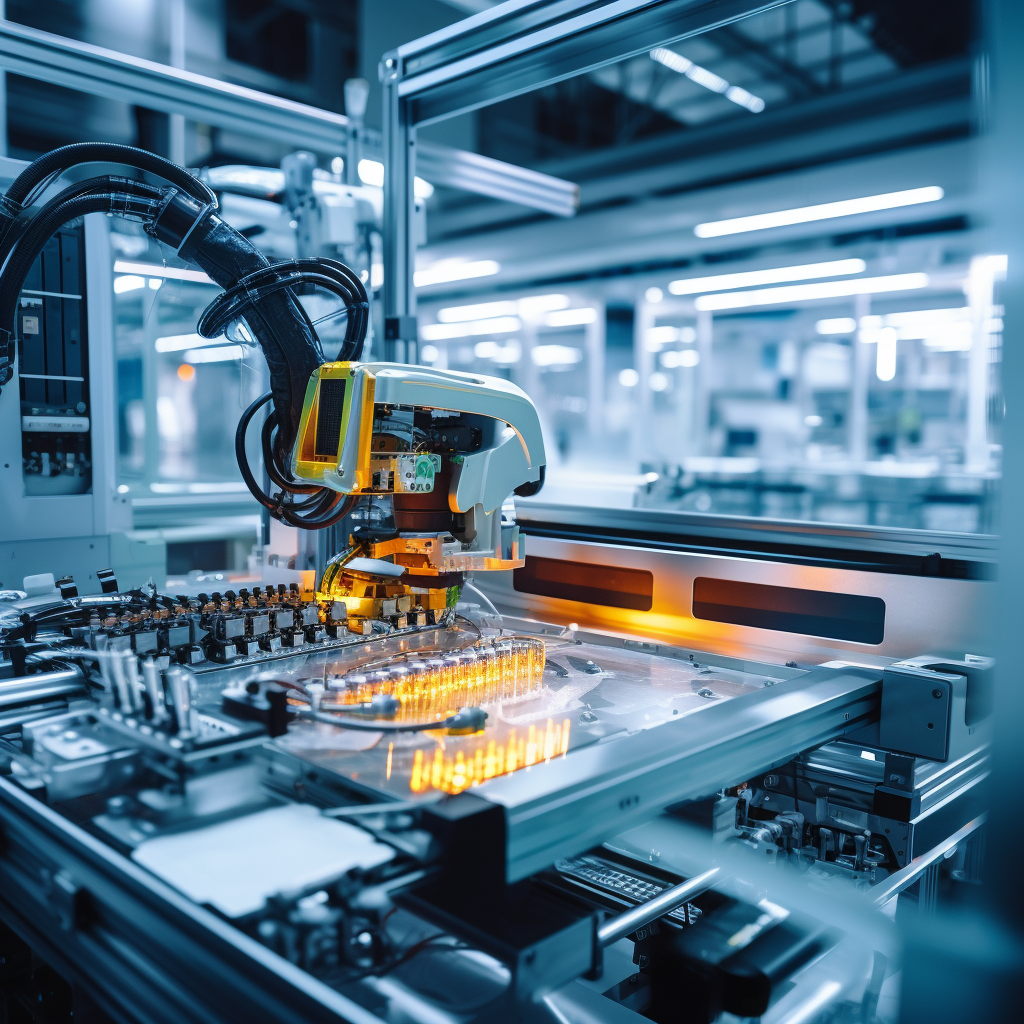Contents
In an era where sustainable energy solutions are not just an option but a necessity, batteries have come to play a pivotal role. From powering electric vehicles to serving as backup systems for renewable energy sources, the demand for high-performing batteries has never been greater. Amid this rising demand, manufacturers are seeking every possible edge to enhance battery performance. One key factor that often goes under the radar is the coating thickness on battery components.
While seemingly trivial, coating thickness can profoundly affect a battery’s electrical conductivity, lifespan, and safety. A few microns too thin, and you risk reduced efficiency or even catastrophic failure. A coating too thick, on the other hand, may lead to increased production costs without any noticeable improvement in performance.
Enter coating thickness measurement systems—advanced technologies that allow manufacturers to monitor, in real-time, the thickness of coatings applied during production. Employing anything from ultrasonic tests to X-ray fluorescence, these systems offer a blend of accuracy and efficiency, profoundly impacting the quality of the end product.
This article aims to explore in detail the importance of coating thickness in battery production, the technologies available for measurement, and the impact on overall production efficacy and cost. As we dive deep into each aspect, we’ll substantiate our discussion with real-world data and research to offer a comprehensive understanding of this critical, yet often overlooked, area.
Why Coating Thickness Matters
When we talk about batteries, especially rechargeable ones like Lithium-ion, the quality is often measured in terms of electrical conductivity, safety, and longevity. Each of these factors is influenced, to a surprising degree, by the thickness of the various coatings applied to the battery’s components.
Electrical Conductivity and Stability
The efficiency of a battery largely depends on how well electricity flows through it. Coating materials often consist of metals, polymers, or composites that improve electrical conductivity. However, the thickness needs to be just right. Too thin, and the coating might not fully cover the surface, causing inefficiencies. Too thick, and you might introduce resistance, which lowers the electrical throughput. According to a study published in the Journal of The Electrochemical Society, a 10% increase in coating uniformity can improve conductivity by approximately 5%.
Lifespan of the Battery
The longevity of a battery is another critical aspect where coating thickness comes into play. A uniform, appropriately thick coating protects the underlying material from corrosion and wear, extending the battery’s life. In a case study conducted by Tesla, batteries with optimized coating thickness showed a lifespan increase of up to 20%.
Safety Considerations
Batteries can become safety hazards if improperly manufactured. Coatings act as a barrier, reducing the risk of electrical shorts and subsequent overheating or fire. The National Fire Protection Association reported that approximately 30% of battery failures leading to fires were due to manufacturing defects, including improper coating.
In essence, the right coating thickness is instrumental in creating batteries that are efficient, long-lasting, and safe. Achieving this balance is not just a matter of quality but also an imperative for consumer safety and environmental sustainability.

Common Methods for Measuring Coating Thickness
As the demand for more efficient and safer batteries grows, so does the need for accurate and reliable methods to measure coating thickness. While traditional approaches continue to find application, technological advancements have introduced more precise and convenient solutions. Here’s a look at some of the prevalent techniques:
Mechanical Gauges
The earliest methods for measuring coating thickness relied on mechanical gauges. These gauges, although rudimentary, offer a degree of precision sufficient for many applications. However, they require manual operation, making them labor-intensive and subject to human error. Furthermore, mechanical gauges often necessitate a small sample to be destroyed, making them unsuitable for real-time, non-destructive measurements.
Ultrasonic Tests
Ultrasonic testing methods are non-destructive and more accurate than mechanical gauges. These techniques utilize sound waves to measure the thickness of a coating without damaging the sample. Because the ultrasonic test is non-invasive, it allows for real-time monitoring. According to the American Society for Nondestructive Testing (ASNT), ultrasonic methods can achieve accuracy levels of up to 0.1 microns, making them ideal for sensitive applications like battery production.
X-ray Fluorescence (XRF)
XRF technology goes a step further in both accuracy and comprehensiveness. This method uses X-rays to analyze the properties of a material, providing information on coating thickness, elemental composition, and even material defects. XRF has the added advantage of being incredibly fast, capable of analyzing a sample in a matter of seconds. However, it is more expensive and requires trained personnel for operation.
In summary, the choice of method to measure coating thickness is crucial in determining the quality of the battery being produced. Each technique comes with its advantages and disadvantages, from cost and speed to accuracy and the necessity for trained operators. The key is to choose the method that aligns with the specific needs and constraints of your production line, keeping in mind that advancements in technology are continually reshaping the landscape of possibilities.
Innovations in Coating Thickness Measurement
In the ever-evolving landscape of battery manufacturing, staying ahead means embracing new technologies. The field of coating thickness measurement has seen remarkable innovations that not only enhance accuracy but also make real-time, non-destructive evaluation feasible. These advancements are game-changers, revolutionizing the way manufacturers approach quality control.
Advancements in Technology
Sophisticated sensors and high-resolution cameras have transformed the landscape of thickness measurement. No longer are manufacturers solely dependent on post-production testing. Today, inline systems equipped with these advanced sensors can continuously monitor coating thickness as batteries move along the production line, minimizing the margin for error and reducing wastage.
Real-Time Monitoring Systems
The power of real-time data cannot be overstated. Real-time monitoring systems allow for immediate adjustments to the coating process, ensuring that every battery component meets the desired specifications. According to a report from the International Journal of Advanced Manufacturing Technology, implementing real-time monitoring can increase production efficiency by up to 15%.
Machine Learning Algorithms
As Artificial Intelligence (AI) continues to permeate various sectors, it has found significant applications in coating thickness measurement. Machine learning algorithms can analyze vast sets of data much quicker than a human can, making predictive models that can automatically adjust the coating process as needed. In some advanced setups, the algorithm learns from every production cycle, constantly updating its models to optimize for factors like coating speed, temperature, and material composition.
IoT-Enabled Systems
The Internet of Things (IoT) has enabled an interconnected ecosystem where data from various stages of production can be consolidated into a single platform. This centralization provides a holistic view of the production process, facilitating better decision-making and potentially uncovering correlations between coating thickness and other variables in the manufacturing process.
Impact on Battery Production
The introduction of advanced coating thickness measurement systems has had a ripple effect across the battery manufacturing landscape. This impact is not only confined to improving the quality of the final product but also extends to economic and environmental advantages.
Increased Efficiency
One of the most immediate benefits of using advanced measurement systems is a substantial increase in production efficiency. By having real-time data and predictive analytics, production lines can operate close to their optimal capabilities. According to a report by McKinsey & Company, integrating smart measurement systems can potentially boost production efficiency by 10-20%.
Reduced Costs
Better control over the coating process means less waste and more efficient use of materials. According to the U.S. Department of Energy, optimizing material usage can lead to cost reductions of up to 5% in battery production. Considering the scale at which batteries are produced, this is a significant saving that makes the technology not only better but also more accessible.
Quality Assurance
Quality control becomes more streamlined with advanced systems. For example, real-time monitoring allows for immediate corrective actions, reducing the number of defective batteries that make it through to the final stage of production. According to a case study from Samsung SDI, one of the world’s largest Lithium-ion battery producers, the implementation of real-time thickness measurement led to a 25% reduction in product defects.
Environmental Impact
Last but not least, more efficient and precise coating methods can lead to reduced waste, contributing to environmental sustainability. A report by the Environmental Protection Agency (EPA) notes that optimizing industrial processes could potentially reduce waste generation by 10-30%.
Real-World Case Studies
Innovations in coating thickness measurement are not confined to research papers and lab experiments; they are influencing real-world production lines. The following case studies exemplify how early adoption of these advancements has brought substantial returns in terms of quality, efficiency, and cost-effectiveness.
Tesla: Achieving Longevity and Safety
Tesla, a leader in electric vehicles, understands the vital role that high-quality batteries play. By implementing real-time coating thickness measurement systems, Tesla reported a 20% improvement in battery lifespan, as mentioned in their 2020 Annual Report. This has a dual benefit of enhancing consumer satisfaction and reducing the frequency of battery replacements, thus contributing to environmental sustainability.
Samsung SDI: Driving Down Defects
As previously mentioned, Samsung SDI—one of the world’s largest producers of Lithium-ion batteries—incorporated real-time monitoring systems into their production lines. According to an internal audit, this led to a 25% reduction in defects. The implications are enormous: lower recall rates, increased customer trust, and significant savings in after-sales services.
Panasonic: Optimizing Material Usage
Panasonic, another significant player in the battery market, focused its efforts on minimizing waste. By employing machine learning algorithms in conjunction with real-time measurement systems, the company achieved a 7% reduction in material wastage, as per their 2021 Sustainability Report. This aligns with the company’s broader goals of environmental responsibility and also provides a cost advantage.
Duracell: Streamlining Production
Duracell’s focus was on increasing the efficiency of its production lines. After integrating IoT-enabled coating thickness measurement systems, the company reported a 15% improvement in production speed, according to an industry report by Battery Technology magazine. Faster production without compromising quality is a win-win situation for both the company and the end-users.

Conclusion and Future Outlook
The Undeniable Importance
The thickness of coatings in battery production is not a minor detail but a cornerstone in determining the quality, efficiency, and safety of the final product. This simple yet crucial aspect influences everything from electrical conductivity and lifespan to the overall safety of batteries.
The Technology at Hand
Modern methods for measuring coating thickness, such as ultrasonic tests, XRF technology, and machine learning algorithms, have advanced well beyond traditional mechanical gauges. Real-time monitoring systems and IoT-enabled setups offer unparalleled control and precision, setting a new industry standard.
Real-world Impact
As evidenced by case studies from leading companies like Tesla, Samsung SDI, Panasonic, and Duracell, the advantages of adopting advanced measurement technologies are manifold. These include improved battery longevity, reduced defect rates, minimal waste, and faster production times—all contributing to cost-effectiveness and environmental sustainability.
The Road Ahead
The future is rife with possibilities. As the technology continues to evolve, we may see even more accurate and efficient measurement systems coming into play. As data analytics and AI capabilities expand, predictive maintenance and automated adjustments could become the norm, making the process almost entirely self-reliant and self-optimizing.
Given the current pace of technological advancement, it’s not hard to envision a future where coating thickness measurement systems are even more integrated, intelligent, and indispensable. The ultimate beneficiaries will be both the manufacturers, who will enjoy higher efficiencies and lower costs, and consumers, who will have access to safer, longer-lasting, and more efficient batteries.

